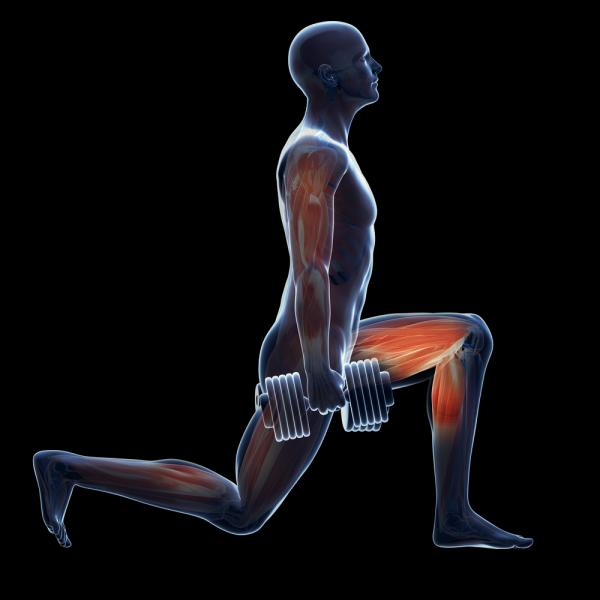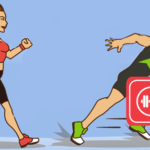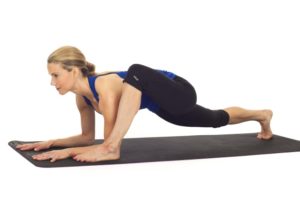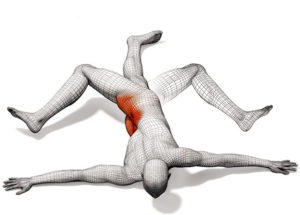This is the second part of my fat loss secret series. If you haven’t already done so, you can read Part 1 here. Resistance training goes well beyond just the gym setting or having access to lots of expensive home-based resistance type equipment (machines, free weights, bands, med balls, etc). Resistance training is not rocket science but many active people omit such training as they have fears of what exactly to do, how much weight to lift and getting injured.
By definition, resistance or strength training is any type of physical exercise specializing in the use of resistance to induce muscular contractions resulting in improvements to the strength, anaerobic endurance, and size of skeletal muscles – and to all you females who think lifting weights will produce a “body builder” image, time to get over that myth and jump onto the sexy train. Most females want “toning” with their new body but what they really mean is they want more lean muscle tissue and a reduction in body fat. Please understand that (significant) muscle size is determined with YEARS of structured strength training and heavy lifting.
Strength Training Benefits
When performed with correct technique, strength training exercises can provide significant functional movement benefits and improvement in overall health including increased muscle, tendon and ligament strength, improved joint function and stability, increased bone density, reduced potential for injury, improved cardiac function and insulin sensitivity, and elevated HDL (“good”) cholesterol.
With respect to body composition benefits (i.e., fat loss), incorporating a variety of resistance-based exercises into your weekly routine has also been shown to increase your resting metabolic rate (how much energy you burn at rest) via increased lean muscle tissue in both men and women. In other words, the more lean muscle one has the lower the body fat percentage. In addition, muscle (vs fat tissue) burns more calories at rest which is a huge advantage when trying to maintain an ideal bodyweight.
Muscle contraction is a primary engine of fat loss. Strength training workouts that target large muscle groups will increase the release of anabolic hormones such as testosterone, human growth hormone, and insulin-like growth factor (varies across both genders) that aid in reducing body fat. Strength training produces the most significant hormonal responses compared to traditional styles of exercise like running/biking. There have been numerous studies that have demonstrated that strength training in conjunction with healthy nutritional habits burns fat much more effectively than dieting alone or dieting in conjunction with aerobic exercise (i.e., running/biking). However, by combining strength training with interval anaerobic training and sound nutrition practices, you have the holy grail recipe for making the most significant body composition changes to your body. Remember, strength training preserves and enhances your lean muscle mass whereas aerobic training or dieting alone allows you to lose bodyweight through the loss of both body fat and muscle mass.
What Should You Do?
As I mentioned above, I feel strength training has a bad reputation that society has solidified. A fear of “bulking” or “getting too big” along with questions about what exercises one should do and how much weight is appropriate is common. Well, I’m here to simplify your strength workouts and recommend that you give resistance-based exercises a try (if you already strength train then please try some of the workouts below, and congrats for being so awesome!)
A simple yet highly effective training protocol is to try and include a pushing, a pulling, a leg, and a core exercise with each workout. This allows for all the major muscle groups to be challenged during each workout resulting in better balance and high caloric expenditure. For those with no access to resistance equipment, you’re in luck as you do not need to purchase any equipment since bodyweight exercises has been shown to produce strength gains. However, purchasing basic equipment like a few sets of dumbbells/kettlebells (light-moderate and moderate-heavy weight for your current capabilities), a medium resistance band, and/or a stability ball will go a long way to allow for versatility in your workouts (all these can be found in most department stores such as Wal-Mart, Sportcheck, and Spartan Athletic Products for approx. $120-140)
Another smart fat-loss practice is to do mostly compound functional exercises (working multiple muscle groups in a functional manner). This method allows for more energy to be utilized and with quicker strength gains overall. Examples include squat and shoulder press, push up rotations, single leg deadlifts and burpies.
How Much Weight Should You Choose?
That will vary from one exercise to the next but a good rule of thumb is enough weight to enable the set reps/time to be challenging. Also, you should be able to distinguish what muscle group(s) you just worked (i.e., muscle burn). I recommend starting with a manageable weight and then look to increase it by 5lbs with each set. For example, while completing goblet squats you can choose a 15lbs dummbbell (DB) for the first set then 20lbs for 2nd set and 25lbs for 3rd set. In order to increase muscular strength you need to have a progressive load. Remember, your goal is to reduce your body fat % and enhancing your lean muscle mass is a key factor for doing so.
Beginner Bodyweight Workout
(each exercise is completed for 30-60 secs with no rest in between each exercise. Rest 90 secs once all are completed and complete 3-4 times.)
1A Reverse Lunges (15-30 secs per leg)
2A Push Ups
3A Sumo Squats
4A Front Plank
“Minimal Access to Equipment” Workout
(all exercises are completed in a pyramid style in a 5 set sequence; 5-10-15-10-5 reps with no rest in between each exercise. Rest 60 secs at the end of each set)
1A Push Ups w feet on ball
2A Squats & Row w resistance band
3A Single Leg Deadlift w dumbbells
4A Side Plank Row w resistance band
5A Mountain Climbers
Gym-Based Workout
(complete each exercise for 45-60 secs resting 60-90 secs after each round. Repeat 2-3 times)
1A Flat Bench Barbell or Dumbbell Bench Press
2A Barbell Back Squat
3A Pull up or Assisted Pull up w bands
4A Stability Ball Plank
5A Treadmill Sprint or Rower sprint
(complete each exercise for 45-60 secs resting 60-90 secs after each round. Repeat 2-3 times)
1B Squat and Press
2B Renegade Rows
3B Walking Lunges
4B Crawling Planks
5B Burpies
Try out some of the sample workouts and let me know how they felt.
Part 3 of this series will focus on the most important component to reaching your fat loss goals: nutrition. Stay tuned.
As always, train hard but train smart!
Oz
References
Kraemer WJ1, Ratamess NA. “Hormonal responses and adaptations to resistance exercise and training.” J Sports Med. (2005);35(4):339-61.
Pratley et al. “Strength training increases resting metabolic rate and norepinephrine levels in healthy 50- to 65-yr-old men.” J Appl Physiol, (1994) Jan;76(1):133-7.
Ryan et al. “Resistive training increases fat-free mass and maintains RMR despite weight loss in postmenopausal women.” J Appl Physiol, (1995) Sep;79(3):818-23.






